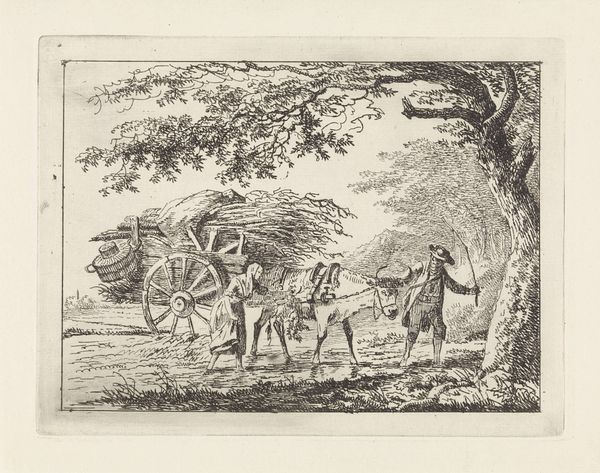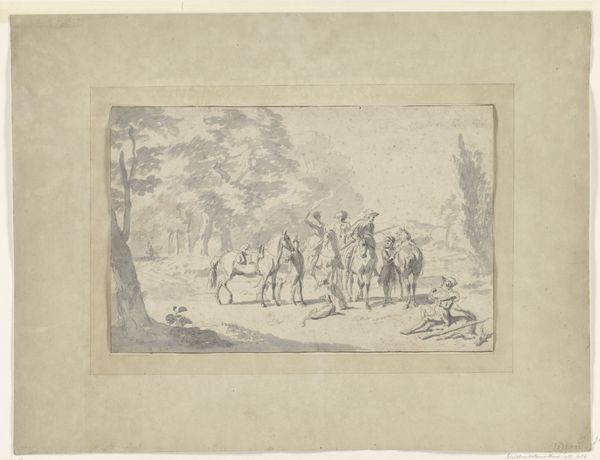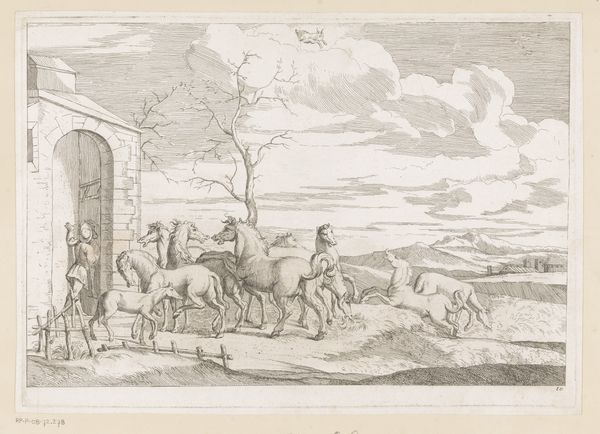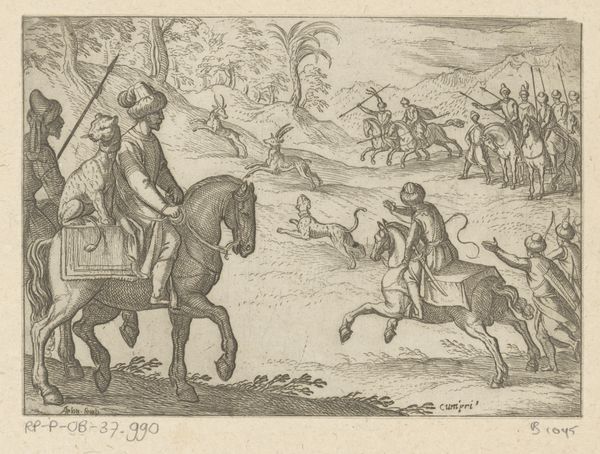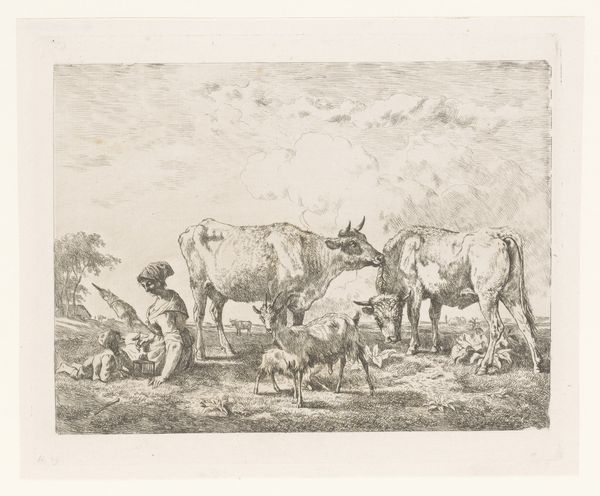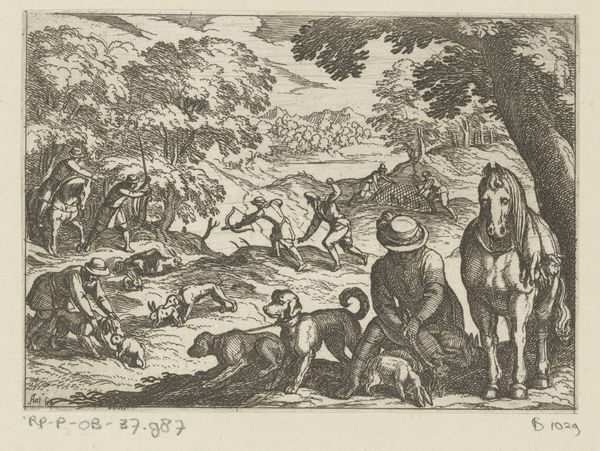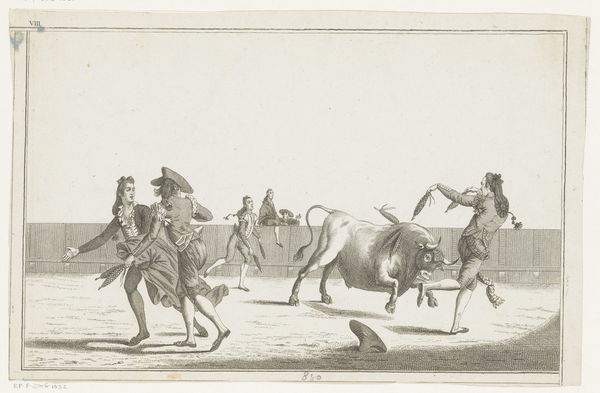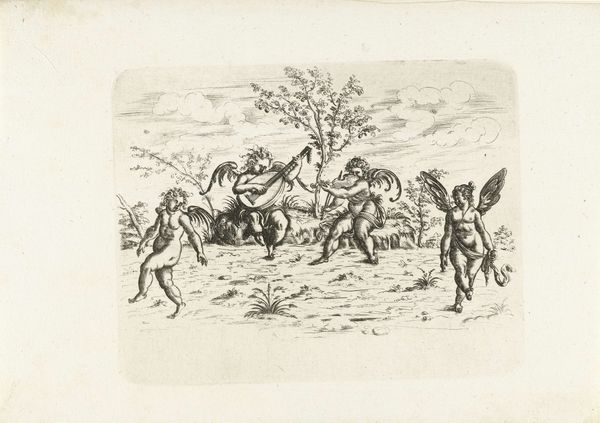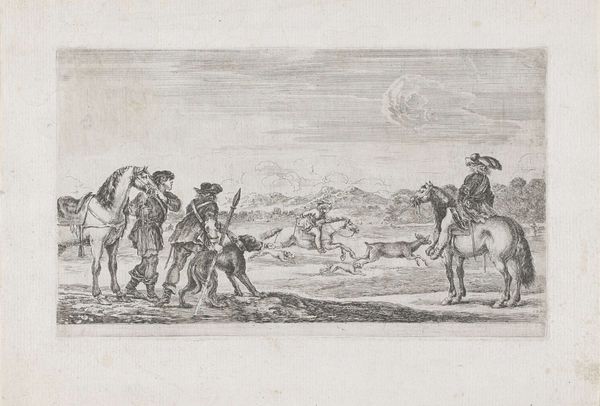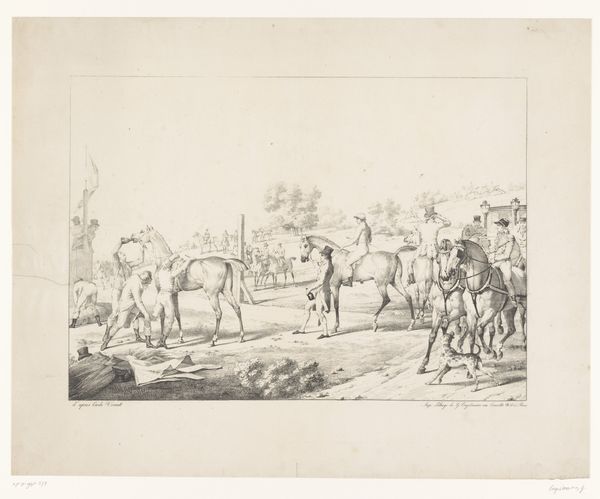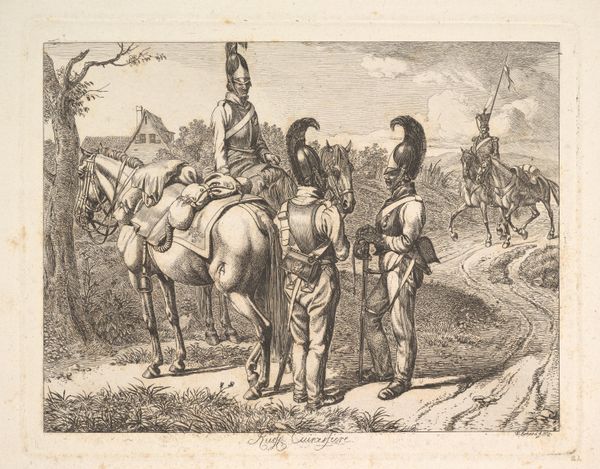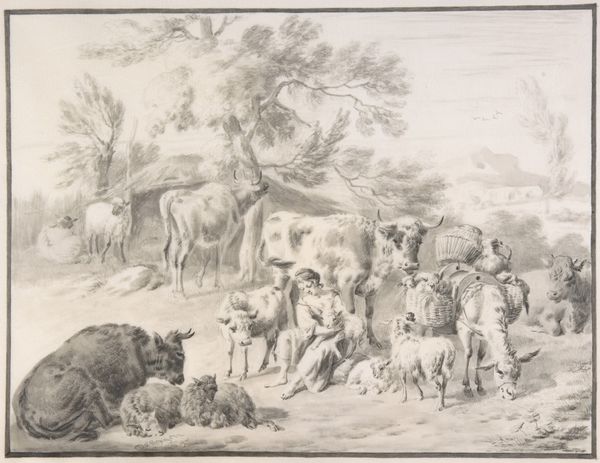
drawing, print, engraving
#
drawing
#
animal
# print
#
dog
#
figuration
#
genre-painting
#
engraving
#
realism
Dimensions: height 188 mm, width 284 mm
Copyright: Rijks Museum: Open Domain
Pieter de Jode the first created this print called ‘Tekenvoorbeelden van honden’ or ‘drawing examples of dogs’ sometime before his death in 1634. Made in the Netherlands, the image is part of a tradition of instructional prints, which were common in the 16th and 17th centuries. During this period, the production and dissemination of art became more commercialized. Prints like these served a dual purpose: to educate aspiring artists and to showcase the engraver's skill. De Jode's image demonstrates various canine poses and breeds, providing a resource for artists seeking to accurately depict animals in their work. It reflects the growing interest in naturalism and the importance of anatomical accuracy in art education. The existence of such instructional materials points to a more structured approach to artistic training. Art was no longer solely the domain of workshops. It reflects the evolving role of art academies and institutions in shaping artistic practices. Understanding the function and context of prints like this one requires looking at historical sources such as artists' manuals, guild records, and inventories of print collections. This contextual research reveals the cultural and institutional forces that influenced its creation.
Comments
No comments
Be the first to comment and join the conversation on the ultimate creative platform.

